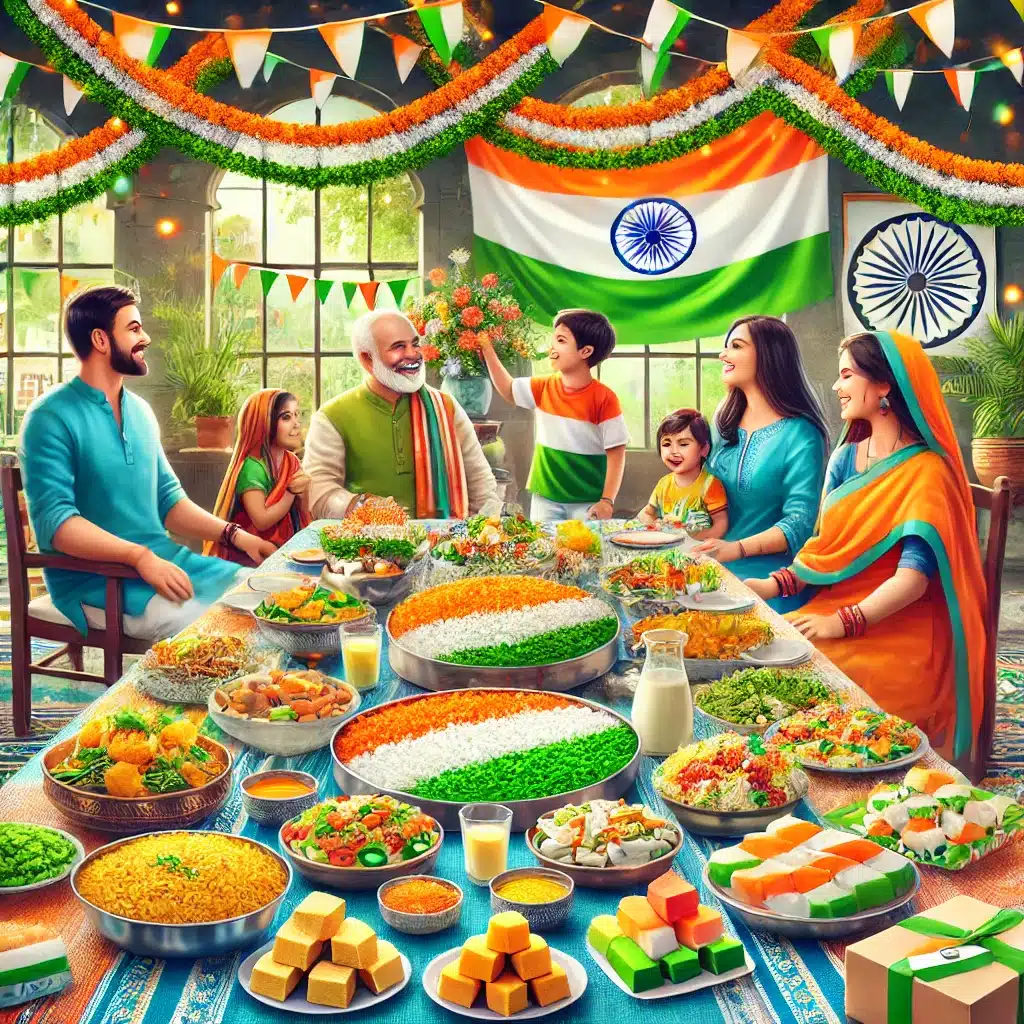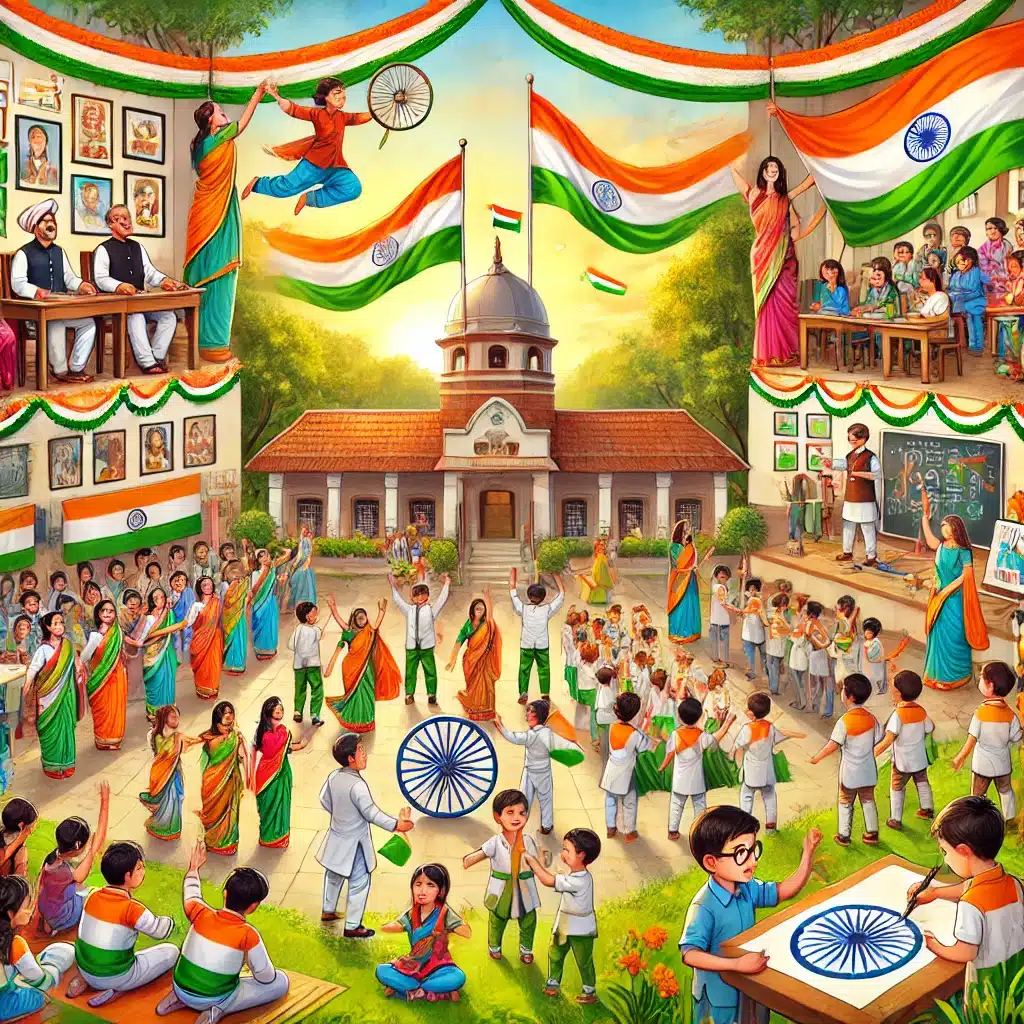The Dawn of a New Era
Every year on August 15th, India celebrates its Independence Day, marking the end of British colonial rule and the birth of a sovereign nation. While most people are familiar with the political aspects of this historic event, there’s a rich tapestry of stories, traditions, and cultural significance that often goes unnoticed. This blog post delves into the lesser-known facets of Independence Day in India, exploring everything from the unsung heroes of the freedom struggle to the culinary traditions that have become an integral part of the celebrations.
The Road to Freedom: Beyond the Textbooks
Forgotten Heroes of the Independence Movement
When we think of India’s struggle for independence, names like Mahatma Gandhi, Jawaharlal Nehru, and Sardar Vallabhbhai Patel immediately come to mind. However, countless other individuals played crucial roles in the fight for freedom, often at great personal cost.
- Matangini Hazra: Known as the “Old Lady of Midnapore,” she led processions against British rule well into her seventies and was martyred during a protest.
- Khudiram Bose: One of the youngest revolutionaries, he was just 18 when he was executed for his role in the independence movement.
- Aruna Asaf Ali: She played a key role in the Quit India Movement and hoisted the Indian flag at the Gowalia Tank Maidan in Bombay during the 1942 Quit India Movement.
These lesser-known freedom fighters remind us that the struggle for independence was a collective effort, involving people from all walks of life.
The Role of Women in the Freedom Struggle
While history often highlights the contributions of male leaders, women played an equally significant role in India’s fight for independence. From organizing protests to participating in armed rebellions, women were at the forefront of the freedom movement.
- Sarojini Naidu: Known as the “Nightingale of India,” she was not only a poet but also a powerful orator who inspired masses to join the independence movement.
- Rani Gaidinliu: A Naga spiritual and political leader, she led a revolt against British rule in Manipur and Nagaland.
- Usha Mehta: She ran an underground radio station, “Congress Radio,” during the Quit India Movement, broadcasting messages of freedom and resistance.
These women, among many others, challenged societal norms and made significant contributions to India’s struggle for independence.
The Cultural Tapestry of Independence Day
Symbols and Their Significance
Independence Day in India is not just about political freedom; it’s also deeply rooted in cultural symbolism. Understanding these symbols provides insight into the nation’s values and aspirations.
- The Indian Flag: The tricolor flag, with its saffron, white, and green bands, represents courage and strength, truth and peace, and growth and auspiciousness, respectively. The Ashoka Chakra at the center symbolizes the eternal wheel of law and righteousness.
- The National Anthem: “Jana Gana Mana,” penned by Rabindranath Tagore, celebrates the diversity and unity of India. Its rendition on Independence Day is a moment of great pride and emotion for all Indians.
- Kite Flying: A popular tradition on August 15th, kite flying symbolizes freedom and the soaring spirit of the nation.
These symbols serve as reminders of the country’s hard-won freedom and its ongoing journey towards progress and unity.
Regional Variations in Celebrations
While Independence Day is a national holiday, its celebrations vary across different regions of India, reflecting the country’s diverse cultural landscape.
- In Delhi, the Prime Minister hoists the national flag at the Red Fort and delivers a speech, which is broadcast nationwide.
- In Mumbai, people often celebrate by sailing paper boats, symbolizing the arrival of Indian leaders from abroad during the independence movement.
- In Kolkata, the streets come alive with processions and cultural programs, often featuring traditional Bengali music and dance.
These regional variations highlight the unity in diversity that is characteristic of India, showing how a single event can be celebrated in myriad ways across the country.
The Culinary Connection: Food and Freedom

Traditional Independence Day Fare
Food plays a significant role in Indian culture, and Independence Day celebrations are no exception. Many families have traditional dishes they prepare on this day, often incorporating the colors of the national flag.
- Tricolor Rice: A popular dish made with saffron rice, white rice, and spinach-flavored green rice, representing the colors of the Indian flag.
- Tiranga Pulao: Similar to tricolor rice but with added vegetables and spices for a more flavorful dish.
- Tricolor Sweets: Desserts like barfi or sandesh are often made in the colors of the flag.
These dishes not only add to the festive atmosphere but also serve as a delicious way to reinforce national pride and unity.
The Evolution of Independence Day Cuisine
Over the years, Independence Day cuisine has evolved, reflecting changing tastes and lifestyles. While traditional dishes remain popular, there’s been a trend towards fusion cuisine and healthier alternatives.
- Tricolor Salads: Incorporating ingredients like carrots, cucumbers, and beets to create a healthy, flag-inspired dish.
- Fusion Desserts: Modern takes on traditional sweets, such as tricolor cupcakes or Independence Day-themed smoothie bowls.
- Patriotic Mocktails: Non-alcoholic beverages in the colors of the flag, often made with fruit juices and natural colorings.
This culinary evolution demonstrates how Independence Day traditions continue to adapt and remain relevant to younger generations while still honoring the spirit of the occasion.
Education and Awareness: Keeping the Spirit Alive
The Role of Schools in Celebrating Independence Day
Educational institutions play a crucial role in instilling a sense of patriotism and understanding of India’s struggle for independence among young people.

- Flag Hoisting Ceremonies: Most schools conduct a flag hoisting ceremony, often followed by the singing of the national anthem and patriotic songs.
- Cultural Programs: Students participate in plays, dance performances, and speeches related to the independence movement and national unity.
- Essay and Art Competitions: Many schools organize competitions with themes related to independence, encouraging students to reflect on the significance of the day.
These activities help young Indians connect with their history and understand the importance of freedom and democracy.
Digital Age Celebrations
In recent years, especially following the COVID-19 pandemic, Independence Day celebrations have adapted to the digital age.
- Virtual Flag Hoisting: Many organizations and communities have moved to online platforms for flag hoisting ceremonies and speeches.
- Social Media Campaigns: Hashtags like #IndependenceDayIndia trend on social media, with people sharing patriotic messages and images.
- Online Cultural Events: Virtual concerts, webinars, and panel discussions on the theme of independence have become increasingly popular.
These digital adaptations ensure that the spirit of Independence Day continues to thrive even in challenging circumstances.
Reflecting on the Present, Looking to the Future
Contemporary Challenges to Freedom

As India celebrates its independence, it’s also important to reflect on the ongoing challenges to freedom and democracy.
- Economic Disparities: Despite significant progress, income inequality remains a pressing issue in India.
- Social Justice: The fight for equal rights and opportunities for all citizens, regardless of caste, religion, or gender, continues.
- Environmental Concerns: Balancing development with environmental protection is a critical challenge for the nation.
Addressing these issues is crucial for realizing the true spirit of independence and ensuring freedom for all citizens.
The Way Forward: Embracing Unity in Diversity
As India moves forward, the principles of unity in diversity that were integral to the independence movement remain relevant.
- Promoting Inclusive Growth: Ensuring that economic development benefits all sections of society.
- Celebrating Cultural Diversity: Recognizing and respecting the various cultures, languages, and traditions that make up the Indian nation.
- Fostering Innovation: Encouraging new ideas and technologies that can address India’s unique challenges and propel it forward on the global stage.
By embracing these principles, India can continue to build on the legacy of its freedom fighters and work towards a future that truly embodies the ideals of independence.
Conclusion
Independence Day in India is more than just a historical commemoration; it’s a living, evolving celebration that reflects the nation’s journey from colonial rule to a sovereign democracy. From the forgotten heroes of the freedom struggle to the evolving culinary traditions, from cultural symbolism to digital-age adaptations, the day encompasses a rich tapestry of experiences and meanings.

Indian tricolor flag waving majestically against a bright blue sky, symbolizing India’s freedom, pride, and unity.
As we celebrate this day, it’s important to remember the sacrifices of those who fought for freedom, reflect on the progress made, and recommit to addressing the challenges that lie ahead. By understanding and appreciating the multifaceted nature of Independence Day in India, we can better grasp the complexity and richness of India’s past, present, and future.
In the words of Jawaharlal Nehru, spoken at the stroke of midnight on August 15, 1947:
“At the stroke of the midnight hour, when the world sleeps, India will awake to life and freedom.”
These words continue to resonate, reminding us of the ongoing journey towards realizing the full potential of independence for all Indians. As we move forward, let us carry the spirit of freedom, unity, and progress that Independence Day embodies, working together to build a stronger, more inclusive India for generations to come.

